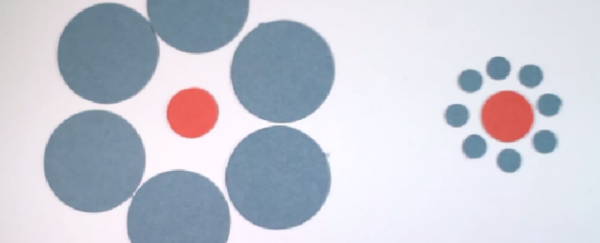
Two centuries ago, American psychologist Joseph Jastrow illustrated an odd little animal head. Featured in the latest episode of BrainCraft above, this black and white sketch could be seen as the head of a duck or a rabbit, depending on how you interpret the organisation of the lines. The image allows for both interpretations - but never simultaneously - and a person can switch between the two with some mental effort. "But do you see the same duck that I see?" Vanessa Hill asks. And while we're on the subject, do you perceive colours in the same way that I do?
In a recent study, researchers asked volunteers to judge which of the orange circles is the biggest in what's known as the Ebbinghaus illusion (pictured above). Using fMRI scans, the researchers mapped the volunteers' visual cortexes - the part of the brain responsible for processing visual information - as they interpreted this simple illusion. They found that the participants with a larger visual cortex were better at judging the true size of the orange circle, and those with smaller visual cortexes were the least accurate. This result was mirrored in several other exercises involving optical illusions.
So why would the size of one region in the brain affect how easily we're fooled by optical illusions? "It could have to do with the concentration of chemical messengers in the visual cortex," says Vanessa in the video above, but it could also be much more complicated than that. Other studies have shown that the effectiveness of an optical illusion differs in people with autism, and in people from different cultures. And, believe it or not, the time of year can also affect how you perceive certain illusions.
Watch the latest episode of BrainCraft above to find out how.
